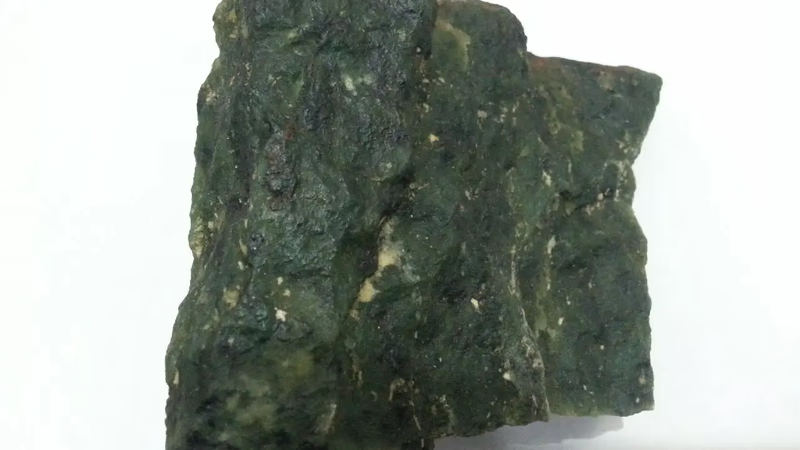
Explore the value of green jade in Middle East trade.
Green jade is a valuable gem and the price of each gram of green jade according to color, transparency, purity, weight, place of extraction and its type can be very cheap to very expensive and depending on the type of jewelry used can be It is different. There are other types such as black, white and even yellow, but here we will deal with the most abundant types of this gem. Note that in the pricing of this gem, color uniformity, transparency such as honey transparency, high purity, gloss and special color are effective in increasing the price, and things such as opacity and stain are of value. This gem reduces. Due to these features, the price can range from $ 1 to $ 1 million. It will be described in more detail below.
The most expensive type of jade is found in Myanmar and is then traded annually in a large trading center for gemstones, jade and pearls located in Rangoon due to the importance of the price of antique jade. Another major point of exchange for this unique gem is Hong Kong, which is due to the high price of green jade in this country. Hong Kong also sells large pieces of gemstones, carved jewelry, small antiques and attractive rhinestones, ranging in value from about a dollar to six-digit price figures.
One of the most risky actions is to buy uncut samples and unprocessed pieces. Large pieces of stone are mainly sold, only a small part of which is shaved, and customers are able to check its quality through that valve. Since it is not possible to check the quality before starting the cutting operation, most people sell substandard and non-original stones at the price of original green jade, which does not have the properties of jade stone.
Price per Gram of Dark and Light Green Jade
Some specimens of this stone have been mined in Guatemala, the United States, Canada and Russia. One of the best examples can be found in Myanmar (Burma), a very high quality type of this gemstone is usually used in necklaces, but in general the price per gram of Myanmar green jade is from 5 to 2500 dollars, in other words 1 Up to $ 500 per carat. Of course, there are other types of jade that have different and very low prices, for example, Khorasani jade has a very low price. The price of the original jade stone in Iran (Khorasani type) is less than $ 1 per gram. This price is related to the cut jewel and its rough price is also lower. In jade gem, the sharper the background color, the higher the price of the original jade stone.
Price of the Original Black Jade
The price of the original black jade is lower than the green type. The greener and clearer this gem is (the clearer the honey), the more valuable it becomes. For the approximate price of the black type (very dark green) up to about 2-3 dollars per gram. For example, the following necklace weighs about $ 30 and weighs about $ 30.
Price of Antique Jade Stone
To determine the price of antique jade stone or other types of jade in general, it is better to refer to an expert so that after distinguishing the original jade stone from the counterfeit, one can accurately comment. Properties and properties that exist increase the price of antique jade stone, but in addition, there are structural factors that affect the price of jade. Items such as special color, transparency such as honey, regular structure, fineness in cutting. They increase the price of jade and in contrast to dull and uneven color, surface cracks, irregular structure and are also effective in reducing the price of jade. Myanmar jade is of very high quality and Myanmar green jade is more expensive than other types. But in the case of antiques, very important factors are: antiquity, place of extraction, historical background of the antique, the design created from that gem, which makes it very difficult to determine the price of the antique jade stone, so refer to an expert is the only solution to this problem.
Price per Kilo of Raw Jade Stone
Buying and selling in kilograms is often used for the rough type. In Iran, the price of a kilo of raw jade is often less than $ 50, but it still depends a lot on the net use of that raw, and the price of $ 50 can be more or less. Of course, there are special examples, especially in China, which are sculpted in the form of sculptures that weigh several tens of kilograms and their price is much higher.
-
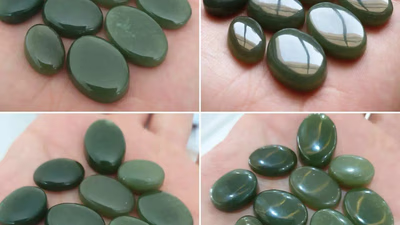
Myanmar"s Hpakant region is renowned for its high-quality jadeite, often called "Burmese jade. " This area has been a significant source of jade for centuries. Guatemala"s Motagua River Valley produces vibrant green jadeite, valued in the international market. China, with its rich jade culture, is known for nephrite jade from regions like Xinjiang and Hetian. Canada has emerged as a notable producer of nephrite jade, particularly in British Columbia. New Zealand"s South Island is famous for pounamu, which holds cultural significance for the Māori people. Australia and Kazakhstan also have significant jade deposits, with Australian jade known for its deep green color. The United States has nephrite deposits in Alaska and California, with notable locations like Big Sur.
Globally, much of the world"s jade is found around the Pacific Ocean rim due to geological processes. Countries like Russia and Central American nations also contribute to the global jade market, producing unique varieties prized for their colors and craftsmanship.
-
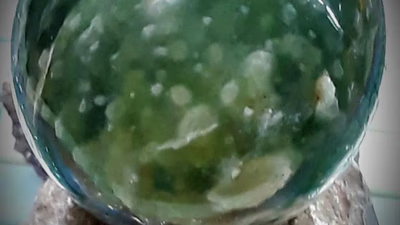
Jade is revered for its believed properties that promote balance, harmony, and well-being. It is thought to align the mind, body, and spirit, fostering a peaceful existence. The stone is associated with wisdom and clarity, enhancing mental faculties and decision-making abilities. Jade"s energy is said to support rational thinking and problem-solving while removing negative forces from environments. Green and purple jade are linked to the heart chakra, promoting emotional stability and deepening breathing. Additionally, jade is believed to strengthen memory and interpret dreams when placed under a pillow. Many consider jade a protective stone that shields against negative energies while attracting success and prosperity. Its calming influence helps alleviate anxiety and stress, encouraging emotional balance.
Furthermore, jade is thought to purify the body, supporting physical health and vitality by aiding the immune system. It also plays a role in spiritual growth by enhancing intuition and facilitating spiritual awakening. While these properties are rooted in traditional beliefs, many individuals find personal significance in incorporating jade into their lives. "
-

Jade is a durable gemstone but can be damaged by harsh chemicals, prolonged water exposure, and rough surfaces. To maintain its quality, avoid using household cleaners and remove jade jewelry during activities that may cause damage. For cleaning, use a soft cloth or brush with warm water and mild soap. Store jade in a soft pouch to prevent scratches and avoid extreme temperatures to prevent cracks. Jade consists of nephrite and jadeite, with nephrite being less valuable due to its lower hardness. Professional cleaning is recommended for intricate pieces or significant dirt buildup.
-

The price of green jade varies significantly based on factors such as color, transparency, purity, weight, and extraction location. Prices can range from $1 to $1 million depending on these attributes. The most valuable jade is sourced from Myanmar, with annual trading occurring in major centers like Rangoon and Hong Kong. In these markets, jade is sold in various forms including carved jewelry and antiques. The quality of jade is crucial; uncut or unprocessed pieces pose risks as they may be misrepresented. For instance, Myanmar green jade can cost between $5 to $2,500 per gram, while Khorasani jade from Iran is priced below $1 per gram. Black jade generally has a lower price point than green jade, with values around $2-3 per gram. Antique jade pricing is complex and requires expert evaluation due to factors like age and historical significance. Raw jade stones are often sold by weight; in Iran, prices for raw jade can be under $50 per kilogram but vary widely based on quality.
-
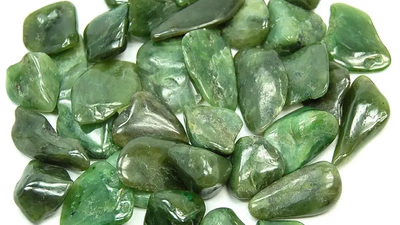
Visual examination is the first step in jade stone detection, focusing on characteristics like color, transparency, and texture. Experts compare stones to known samples and assess their overall appearance. Density and hardness measurements help distinguish between jadeite and nephrite, with jadeite being harder. The classification system categorizes jade into types A (Imperial), B (treated), and C (low quality). Misidentification can occur as jade resembles emeralds but differs in color variety and market value. Jade"s historical classification evolved from a single mineral to two distinct types recognized by mineralogists. Advanced techniques such as refractive index measurement, spectroscopy, and X-ray diffraction are essential for accurate identification. These methods help detect synthetic or treated stones, while UV light can reveal fluorescence patterns unique to jadeite.
Expertise from gemologists is crucial for authenticating jade due to the high market value of genuine specimens. Understanding these detection methods is vital for buyers to avoid counterfeit stones. "
-
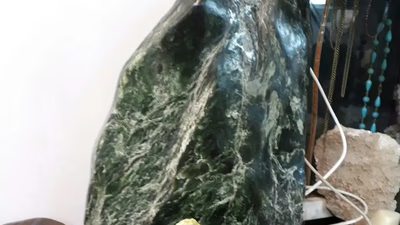
Jade quality is primarily determined by color, transparency, texture, and luster. Jadeite and nephrite exhibit a variety of colors, with vibrant hues being more desirable. Jadeite"s value increases with its transparency; high-quality jadeite is translucent, while nephrite is typically opaque. Jade is categorized into several grades: Category A represents high-quality jade with excellent color and transparency; Category B involves surface treatments that enhance appearance but compromise purity; Category C includes industrially dyed stones; Category B-C combines both methods; and Category D features a composite structure with plastic. Texture plays a crucial role in valuation, with smooth surfaces free from blemishes being preferred. Luster varies from matte to glassy, with bright reflections indicating higher quality. The craftsmanship involved in carving also significantly impacts jade"s value, as intricate designs and expert techniques enhance desirability.
-
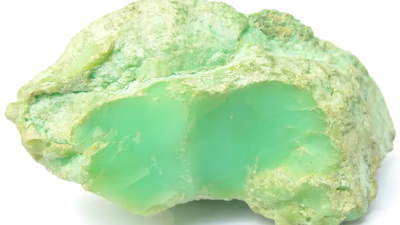
Jade is a gemstone with deep cultural significance, particularly in East Asia, where it symbolizes status, spirituality, and protection. In Chinese culture, jade is associated with virtues like wisdom and purity, believed to ward off evil spirits and provide spiritual protection. Various colors of jade exist, with the most valuable being the emerald green variety from Myanmar. Historically, jade carvings date back to 5,000 BC in China and have been used for good luck and healing properties. The value of jade is determined by its color, transparency, and texture; darker shades command higher prices. However, buyers must be cautious of counterfeit stones that are difficult to distinguish from genuine ones. The classification system includes "Imperial Jade" (Jade A), treated stones (Jade B), and low-quality dyed stones (Jade C). Consulting a reputable jeweler is essential to avoid purchasing fakes.
Jade"s connection to spiritual growth and enlightenment enhances its appeal as a bridge between physical and spiritual realms. Its beauty and rarity have captivated enthusiasts for centuries. "







